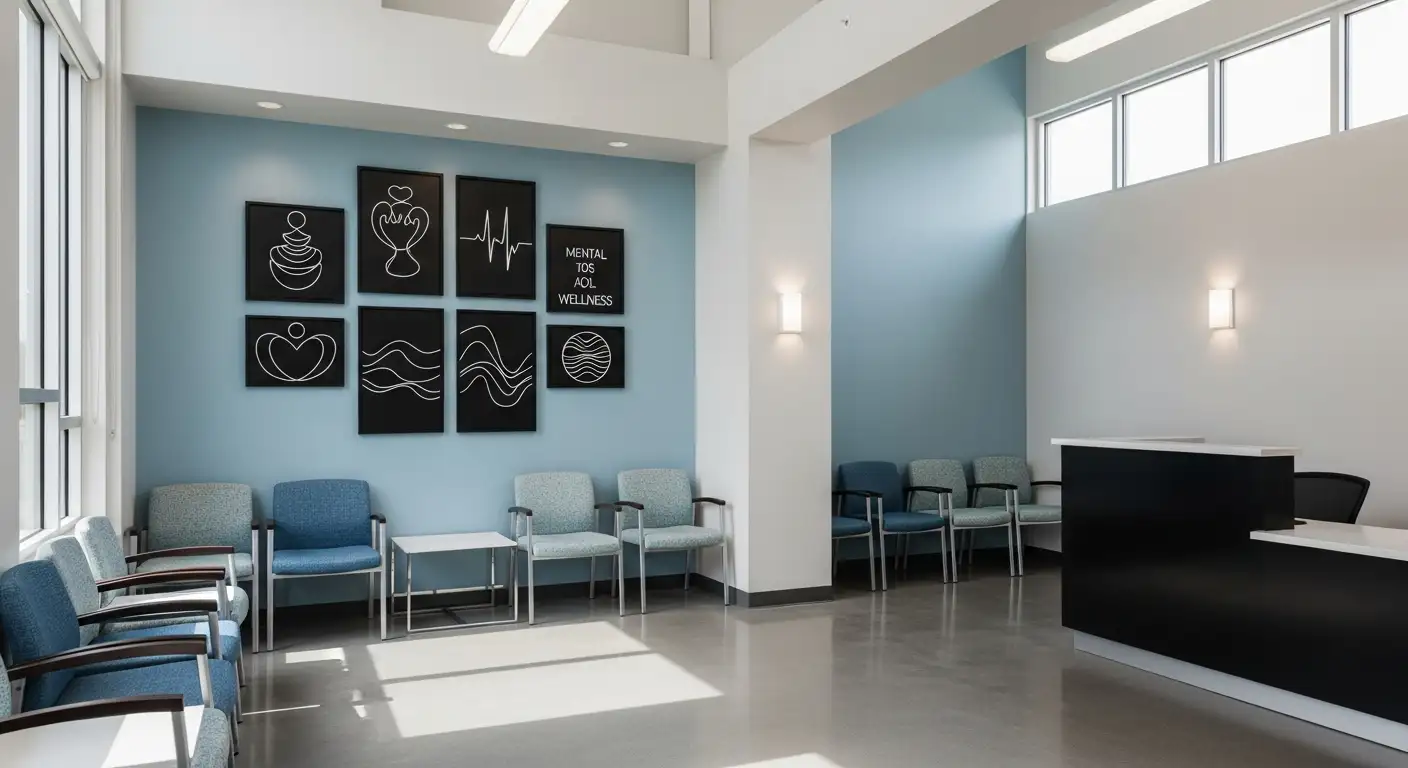Setting the Stage: The Critical Link Between Medication and Mental Health in Seniors
As the senior population grows, the intersection of medication side effects and mental health becomes increasingly significant. Older adults often manage multiple chronic conditions requiring diverse medications, which can influence cognitive and emotional well-being. Understanding this complex interplay is essential for enhancing seniors' quality of life and ensuring safer healthcare outcomes.
The Growing Challenge of Substance Use and Medication in Older Adults
Prevalence of Substance Use Disorders (SUD) in Seniors
Approximately 1 million adults aged 65 and older live with substance use disorders. The proportion of older adults admitted for substance use treatment almost doubled from 3.4% in 2000 to 7.0% by 2012, reflecting a significant rise in SUD in this age group. Alcohol remains the most common substance, with 65% reporting high-risk drinking and over 10% binge drinking. Notably, the rate of alcohol use disorder in seniors increased by 107% from 2001 to 2013.
Trends in Prescription Medication and Substance Misuse
Older adults often use multiple medications daily—over 80% aged 57-85 take at least one prescription drug—to manage chronic conditions. However, misuse of prescription medications, especially opioids and benzodiazepines, is rising, with estimates of misuse ranging from 1% to 26%. This age group has seen a notable increase in opioid use, both prescription pain relievers (from 1995 to 2010) and illicit opioids like heroin, which more than doubled between 2013 and 2015. Marijuana use has also increased markedly, from 0.4% to 2.9% between 2006 and 2016.
Impact of Polypharmacy on Substance Abuse Risk
Polypharmacy—or the concurrent use of multiple medications—magnifies the risk of adverse drug interactions, misuse, and health complications in older adults. Aging slows drug metabolism and increases sensitivity to substances, exacerbating health risks and adverse effects. Medication misuse can be unintentional but may escalate into abuse, especially when medications are used for unintended purposes or beyond prescribed doses. Factors like social isolation, female gender, and mental health disorders elevate this risk. Effective management requires careful screening, patient education, and integrated care approaches to prevent misuse and optimize medication safety.
Age-Related Changes in Drug Metabolism and Sensitivity
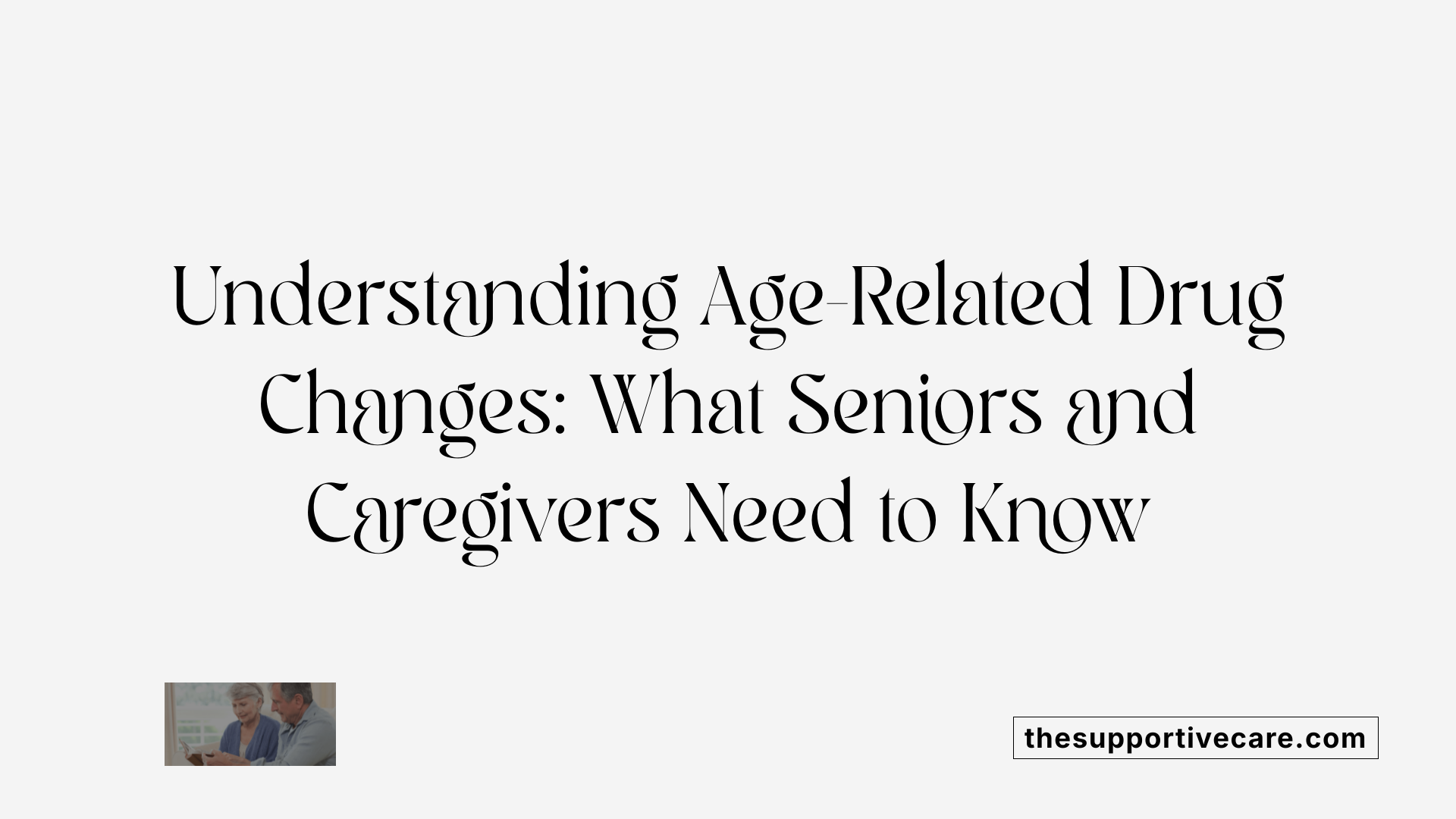
How does slower metabolism affect drug processing in older adults?
As people age, their bodies undergo physiological changes that slow down the metabolism of drugs. This slowdown means medications and substances stay in the system longer than they do for younger adults. Organs responsible for metabolizing drugs, such as the liver and kidneys, tend to work less efficiently with age. Consequently, the clearance of medications from the body is reduced, increasing their concentration in the bloodstream over extended periods.
Why are older adults more sensitive to medications and substances?
In addition to slower metabolism, older adults exhibit increased sensitivity to many medications and substances. Changes at the cellular and receptor levels in the body make older individuals more responsive to the effects, both therapeutic and adverse, of drugs. This sensitivity can amplify side effects such as sedation, dizziness, and cognitive impairment.
What are the health consequences of these changes?
The combination of slower drug clearance and greater sensitivity often exacerbates existing health problems in older adults. These changes increase the risk of adverse drug reactions, including confusion, falls, respiratory depression, and impaired coordination. Mental functions such as memory and balance may be affected, raising the likelihood of accidents and hospitalizations. Managing doses carefully and monitoring responses closely are essential to prevent harmful outcomes.
These age-related changes highlight the importance of cautious prescribing and continuously evaluating medication regimens in older patients to avoid drug accumulation and intense responses that could compromise health and safety.
Psychotropic Medications: Benefits and Risks for Seniors
Common psychoactive drugs prescribed to older adults
Older adults frequently use psychoactive medications such as opioid analgesics and benzodiazepines. These drugs are commonly prescribed for managing pain, anxiety, and insomnia. Additional commonly prescribed medications that affect the central nervous system in seniors include antidepressants, antipsychotics, and anticonvulsants.
Side effects including mood changes, cognitive decline, and increased fall risk
The use of these medications in seniors is associated with a range of serious health consequences. Side effects often include mood disturbances such as depression and paradoxical worsening of depressive symptoms. Cognitive decline can also occur, negatively impacting memory and thinking abilities.
Furthermore, these psychoactive drugs increase risks for falls and related injuries like hip fractures due to effects on coordination, balance, sedation, and vision impairment. Side effects such as drowsiness, dizziness, and excessive sedation contribute significantly to fall risk. These adverse outcomes are exacerbated by age-related changes in drug metabolism and the heightened sensitivity that older adults have to medications.
Dependence and abuse potential of opioids and benzodiazepines
Opioids and benzodiazepines carry a high potential for dependence and abuse in older populations. Misuse may begin unintentionally but can escalate, particularly with longer use or higher doses than prescribed. Given the risks, it is crucial to monitor prescriptions carefully and consider non-pharmacological treatments like cognitive behavioral therapy (CBT) and physical therapy when appropriate.
Regular medication reviews and integrated care approaches are recommended to minimize medication-related harms, improve outcomes, and reduce reliance on psychoactive drugs with high abuse potential in seniors.
Polypharmacy and Its Role in Medication Side Effects and Mental Health
The prevalence of multiple medication use in seniors
Older adults frequently take multiple medications, with over 80% of those aged 57 to 85 using at least one prescription drug daily. This widespread use of drugs, often involving psychoactive medications such as opioid analgesics and benzodiazepines, creates a complex medication landscape that requires careful management.
Risks associated with drug interactions and adverse effects
Taking multiple medications increases the risk of drug interactions, adverse drug effects, and medication misuse or abuse. Older adults experience adverse drug events at a high rate—approximately 50 events per 1000 person-years—and hospitalizations due to these events occur 4 to 7 times more often than in younger individuals. Commonly implicated drugs include opioids, antipsychotics, anticoagulants, and diabetes medications. Polypharmacy, combined with age-related changes in drug metabolism, means that medications may accumulate in the body, prolonging their effects and intensifying risks.
Consequences such as sedation, confusion, and depression
Many medications prescribed to seniors can cause serious cognitive and physical side effects. These include sedation, confusion, dizziness, impaired coordination, and depression. Drugs with anticholinergic properties—used for conditions like depression, nausea, allergies, and Parkinson’s disease—can particularly impair thinking and increase fall risk. Sedation from psychoactive drugs not only elevates the chance of falls and injuries but may also contribute to social withdrawal and worsening mental health. Some medications even paradoxically worsen depression, highlighting the need for cautious prescribing and regular medication review.
Healthcare providers are urged to monitor medication effects closely and incorporate non-drug interventions like cognitive behavioral therapy and physical therapy to help reduce reliance on medications with high side effect risks. Regular medication reviews and updated medication lists are essential to minimizing harm and safeguarding seniors’ mental and physical health.
Common Medication Side Effects Impacting Mental Health in Seniors

Drowsiness, Dizziness, Confusion, and Sedation
Many medications commonly prescribed to older adults can cause side effects such as drowsiness, dizziness, confusion, and sedation. Drugs including antidepressants, benzodiazepines, antipsychotics, opioids, beta-blockers, corticosteroids, sleep aids, anticonvulsants, statins, and antihistamines are frequently implicated. These side effects can severely impact seniors by increasing their risk of falls, impairing their balance, and reducing overall safety.
Medication-Induced Depression and Cognitive Decline
Certain medications can paradoxically worsen or trigger depression in elderly patients. Antidepressants, benzodiazepines, and corticosteroids, while used for various conditions, may contribute to mood disturbances. Moreover, some antipsychotics and antidepressants have been linked with cognitive decline and increased risk of stroke or death, particularly in seniors with dementia. These effects highlight the importance of careful medication management in this vulnerable group.
Medications Causing Falls and Injuries
Several medications are associated with an increased risk of falls and injuries due to their impact on coordination, balance, and cognition. Drugs prescribed for anxiety, sleep disorders, depression, nausea, allergies, Parkinson’s disease, psychosis, and seizures can impair physical stability. Polypharmacy and age-related metabolic changes further exacerbate these risks by prolonging drug effects and side effects in older adults.
Regular medication reviews and close monitoring can help mitigate these adverse effects, while non-drug interventions like cognitive-behavioral therapy and fall prevention strategies offer safer alternatives to managing symptoms. Ultimately, personalized medication plans and vigilant care are essential to safeguard the mental and physical health of seniors.
Hidden and Underdiagnosed Substance and Medication Misuse in the Elderly
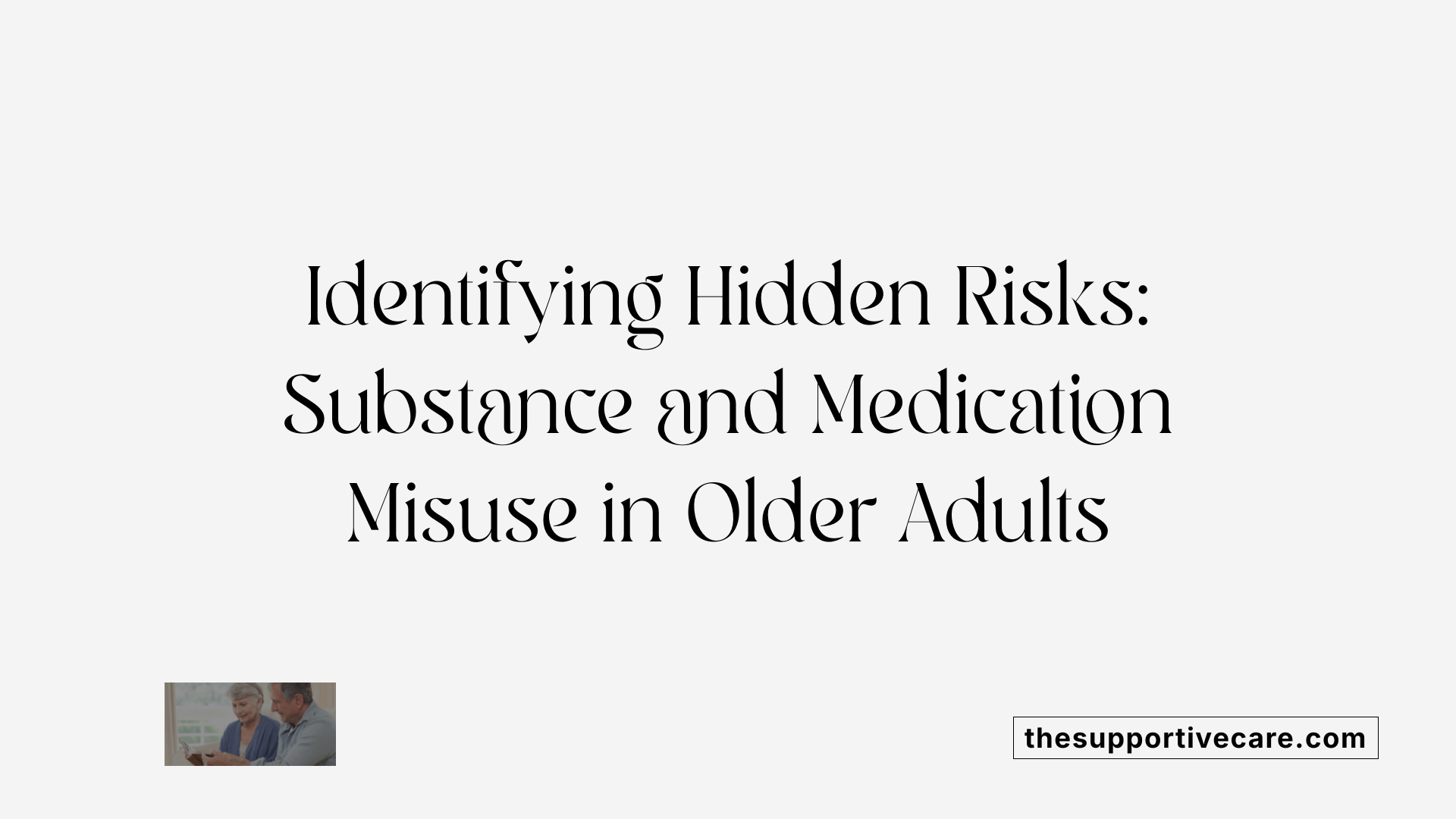
Overlapping symptoms with aging complicating diagnosis
Substance and medication misuse among older adults often remains hidden and underdiagnosed because its signs and symptoms can mimic typical aging processes. Memory problems, sleep disturbances, and mood changes common in elders may be mistakenly attributed to normal senescence or existing health conditions rather than substance misuse. This overlap challenges healthcare providers in correctly identifying substance use disorders (SUD) in this population.
Unintentional misuse escalating to abuse
Many older adults unintentionally misuse prescription medications by exceeding recommended doses or prolonging use beyond prescribed durations. What begins as improper use for managing pain, anxiety, or insomnia can escalate into dependence or outright abuse, especially with psychoactive drugs like opioids and benzodiazepines. Unmonitored medication use increases risks of adverse effects, cognitive decline, and falls.
Risk factors including social isolation and depression
Certain factors raise the susceptibility of seniors to substance misuse problems. Female gender, social isolation, mental health disorders such as depression, and a history of substance abuse are significant contributors. Stressful life events like medical illnesses or bereavement can also trigger changes in substance use patterns. Awareness of these risk factors is crucial for early detection and intervention.
Routine screening and open dialogue about substance use can help mitigate these challenges. Integrating prevention and monitoring into healthcare and community services is essential to better address this under-recognized issue among older adults.
Strategies for Safe Medication Use and Monitoring in Seniors
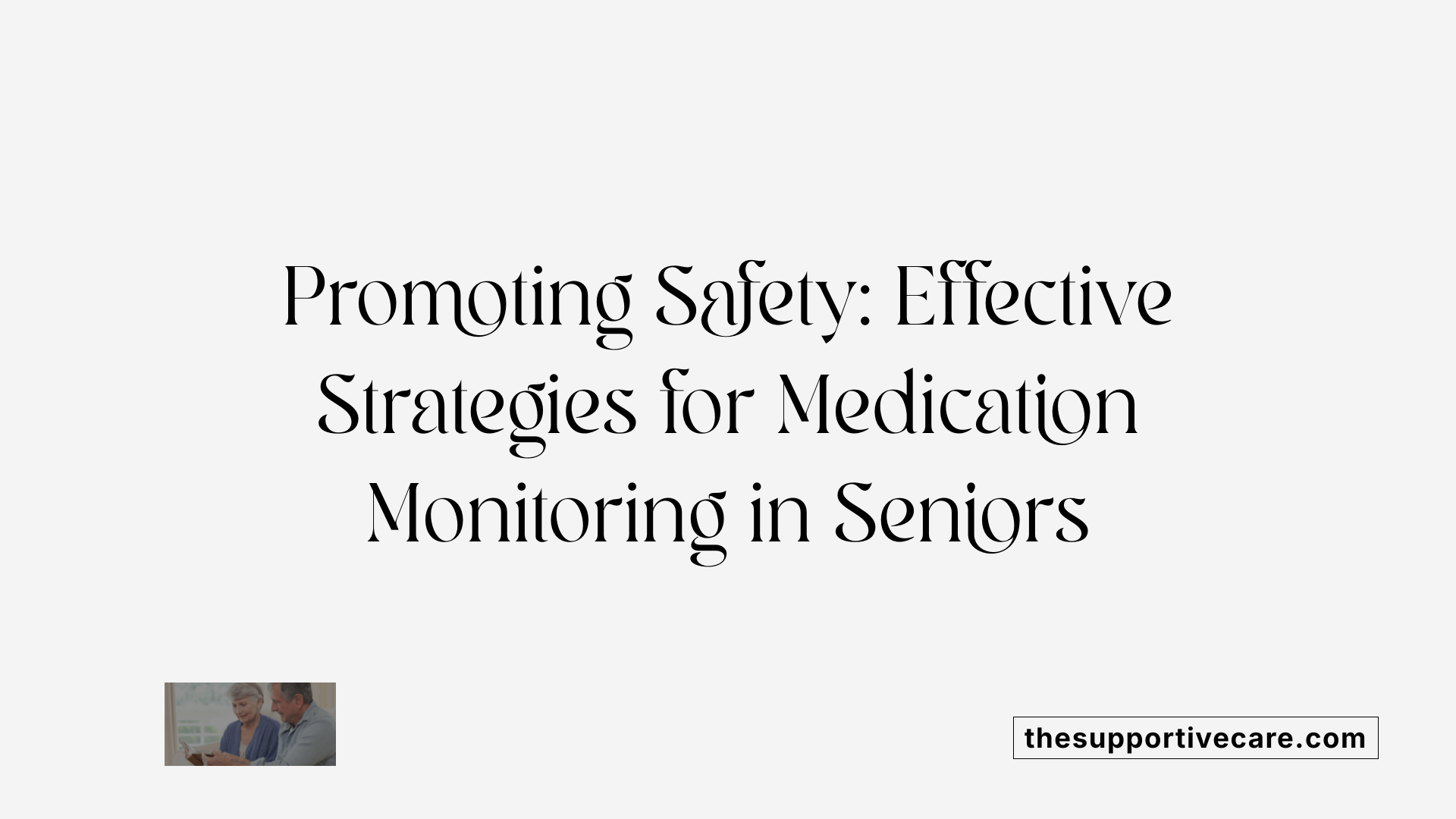
Routine Screening and Medication Reviews
Regular screening for medication misuse and substance use is crucial in older adults to identify potential health risks early. Routine medication reviews, including 'brown bag' audits where patients bring all their medications, help detect incorrect dosing, drug interactions, and unnecessary prescriptions.
Role of Healthcare Providers in Prescribing and Monitoring
Healthcare providers play a vital role in prescribing medications cautiously, considering age-related changes in drug metabolism. They should monitor patient responses closely, watch for adverse drug effects, and favor non-pharmacological treatments when appropriate. Integrated care models that address medical and psychiatric conditions improve outcomes in senior patients.
Importance of Updating Medication Lists and Patient Education
Maintaining an updated list of all medications—prescription, over-the-counter, and supplements—is essential for safe medication management. Education about correct medication use and potential side effects empowers older adults to follow instructions properly and report problems promptly. Open communication between patients and providers supports medication safety and helps prevent complications associated with polypharmacy and substance misuse.
Non-Pharmacological Approaches to Managing Mental Health and Pain
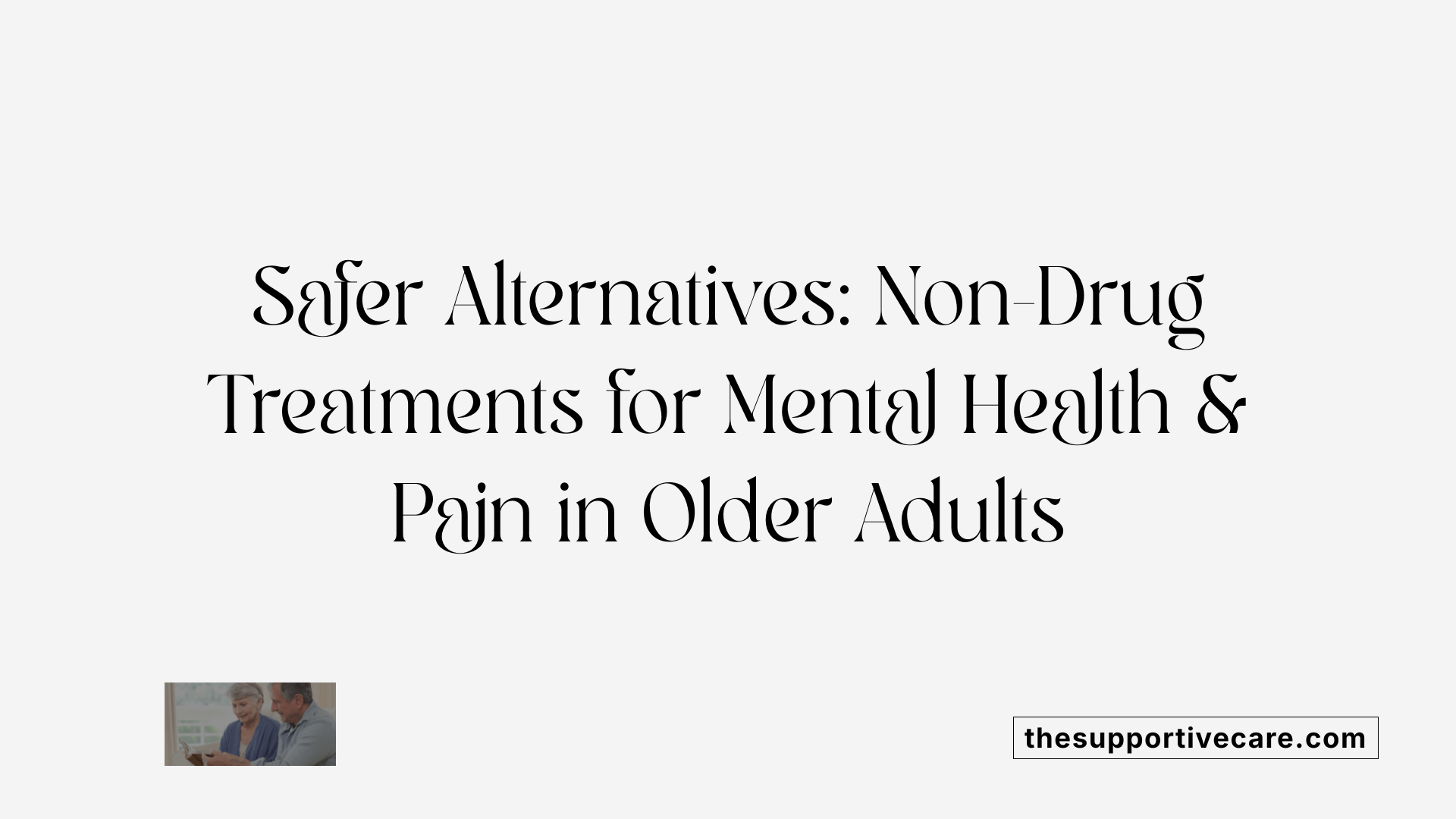
What is Cognitive-Behavioral Therapy (CBT) and how does it help?
Cognitive-behavioral therapy (CBT) is a structured, evidence-based psychological treatment that helps older adults manage mental health disorders by changing negative thought patterns and behaviors. It is effective for depression, anxiety, and substance use disorders in elderly populations. CBT can improve coping skills without the risks associated with psychoactive medications, reducing side effects like dizziness or cognitive decline.
How do physical therapy and fall prevention contribute?
Physical therapy plays a vital role in maintaining mobility, strength, and balance among older adults. Fall prevention strategies are crucial as medications often impair coordination and increase the risk of injury. Interventions include balance training, strength exercises, and home safety assessments to minimize hazards, all of which help reduce reliance on sedative or psychotropic drugs that might otherwise be prescribed.
Why focus on reducing reliance on risky medications?
Many older adults take multiple medications with high dependence potential, such as opioids and benzodiazepines, which can cause sedation, confusion, and falls. Non-pharmacological approaches like CBT and physical therapy can alleviate symptoms like pain, anxiety, and insomnia, lowering the need for these drugs. This helps mitigate adverse drug effects, drug interactions, and hospitalizations related to medication misuse.
Together, these non-drug treatments offer safer, effective alternatives for managing mental health and pain in older adults, improving quality of life while minimizing medication-related risks.
Effective Treatment and Recovery Options for Seniors Facing Medication and Substance Challenges
What treatment options are available for substance use disorders in older adults?
Treatment for substance use disorders (SUD) in seniors often integrates behavioral therapies and medications tailored to older adults' unique needs. Behavioral approaches such as cognitive-behavioral therapy (CBT), motivational therapy, contingency management, and brief interventions can effectively reduce substance misuse. Medications may be prescribed when appropriate, especially for managing withdrawal or cravings.
How does integrated care improve outcomes?
Integrated care models that address coexisting medical and psychiatric conditions yield better results for seniors. Since many older adults have chronic health issues and polypharmacy concerns, treatments that consider their full health profile help optimize medication safety and manage mental health symptoms alongside addiction therapy.
What improvements can be expected from treatment at any age?
Recovery and quitting substance use at any age enhance quality of life, mental health, and social engagement. Older adults often achieve outcomes comparable to or better than younger patients. Longer durations in treatment are associated with improved recovery prospects, highlighting the importance of sustained care and support for seniors.
Moving Forward: Prioritizing Mental Health and Medication Safety in the Elderly
Addressing the intricate relationship between medication side effects and mental health in seniors requires a comprehensive, multidisciplinary approach. Through vigilant medication management, routine screening, patient education, and integration of non-pharmacological therapies, healthcare providers can significantly reduce risks and improve mental wellbeing. Encouraging recovery from substance misuse and carefully monitoring medication use empowers older adults to achieve better health outcomes and maintain social engagement, ultimately enhancing quality of life in their golden years.
References
- Substance Use in Older Adults DrugFacts - Nida.nih.gov
- Prescription Medication Misuse and Abuse Among Older ...
- Medication-Related Problems in Older Adults - Geriatrics
- Substance Abuse in the Elderly
- What to Know About Medications That Could Harm Older ...
- Medication & Mood: 10 Drugs That Harm Mental Health













